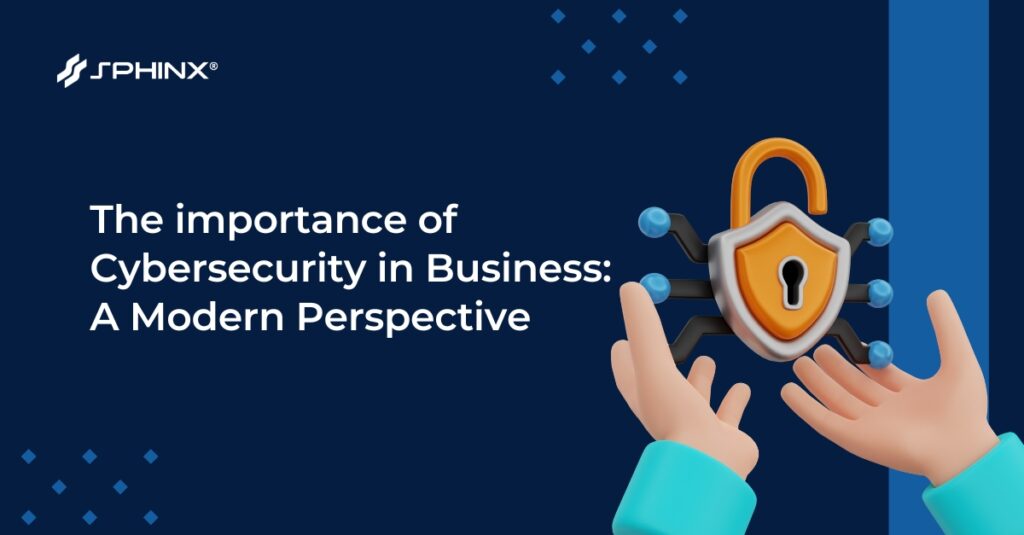In the rapidly evolving digital landscape of the 21st century, the importance of cybersecurity in business cannot be overstated. As businesses across the globe become increasingly reliant on digital platforms for everything from customer engagement to data storage, the potential for cyber threats has grown exponentially.
The digital revolution has brought with it a host of benefits, including increased efficiency, cost savings, and the ability to reach customers on a global scale. However, this digital dependence also comes with significant risks. Cyber attacks are not just a threat to large corporations but to businesses of all sizes. In fact, according to a report by Cybersecurity Ventures, cybercrime damages were predicted to reach a staggering $6 trillion globally in 2021.
Moreover, the FBI’s Internet Crime Report indicated that in the U.S. alone, cybercrime resulted in losses surpassing $6.9 billion in 2021. These figures underscore the critical need for robust cybersecurity measures in today’s business environment.
Cybersecurity is no longer just an IT concern but a crucial business issue that requires attention from the highest levels of management. It is not just about preventing attacks, but also about safeguarding business continuity, protecting sensitive data, preventing unauthorized access, and maintaining system integrity.
In this context, the role of cybersecurity in business is not just about defense but also about enabling growth and innovation in a secure digital environment. As we move forward into the digital future, the importance of cybersecurity in business will only continue to grow.
1. Challenges when adopting Cybersecurity in Business
Adopting cybersecurity measures in a business environment is not without its challenges. These challenges can be multifaceted, ranging from limited resources and budget constraints to the complexity of emerging technologies and evolving threat landscapes. Here are some of the key challenges businesses face when adopting cybersecurity:
1.1. Lack of awareness and understanding
One of the primary challenges businesses faces is a lack of awareness and understanding about cybersecurity risks and best practices. Many organizations lack the necessary knowledge to effectively protect their digital assets. This lack of awareness can lead to vulnerabilities in the system that can be exploited by cybercriminals.
1.2. Limited resources and Budget constraints
Many businesses, especially small and medium-sized enterprises (SMEs), often have limited resources and budget constraints. This can make it difficult for these businesses to invest in advanced cybersecurity measures. Furthermore, the cost of recovering from a cyber attack can be devastating for these businesses.
1.3. Complexity of emerging technologies
The rapid advancement of technology brings with it new and complex cybersecurity challenges. As businesses adopt emerging technologies such as artificial intelligence (AI), machine learning (ML), and cloud computing, they also expose themselves to new types of cyber threats. These technologies require specialized knowledge and skills to secure effectively.
1.4. Insider threats and human error
Insider threats and human error are significant contributors to cybersecurity incidents. These can range from employees accidentally clicking on malicious links to disgruntled employees intentionally causing harm. Training employees on cybersecurity best practices can help mitigate these risks.
1.5. Rapidly Evolving Threat Landscape
The cybersecurity threat landscape is constantly evolving, with cybercriminals becoming increasingly sophisticated in their attacks. Businesses must stay updated on the latest threats and continuously adapt their cybersecurity strategies to effectively combat these threats.
1.6. Compliance with Regulatory Requirements
Businesses are also faced with the challenge of complying with a myriad of regulatory requirements related to cybersecurity. Non-compliance can result in hefty fines and penalties, not to mention damage to the business’s reputation.
2. Overcoming the challenges
While these challenges may seem daunting, they are not insurmountable. Here are some strategies businesses can employ to overcome these challenges:
2.11. Cybersecurity education and training
Investing in cybersecurity education and training for employees can significantly reduce the risk of cyber attacks. This includes training employees to recognize and respond to phishing attempts, use strong passwords, and follow best practices for data security.
2.2. Leveraging technology
Businesses can leverage technology to enhance their cybersecurity measures. This includes using firewalls, intrusion detection systems, antivirus software, and other security tools to protect their digital assets.
32.3. Regular Cybersecurity assessments
Conducting regular cybersecurity assessments can help businesses identify their specific cybersecurity vulnerabilities. These assessments can provide valuable insights into areas where the business’s cybersecurity measures may be lacking and where improvements can be made.
42.4. Developing a Cybersecurity culture
Creating a culture of cybersecurity within the organization can also help mitigate cyber risks. This involves promoting a culture where all employees understand the importance of cybersecurity and their role in protecting the organization’s digital assets.
52.5. Partnering with Cybersecurity experts
Finally, businesses can consider partnering with cybersecurity experts to enhance their cybersecurity measures. These experts can provide the specialized knowledge and skills needed to secure emerging technologies and stay ahead of the evolving threat landscape.
In conclusion, while adopting cybersecurity in business comes with its challenges, these can be effectively managed with the right strategies and resources. By understanding these challenges and taking proactive steps to address them, businesses can significantly enhance their cybersecurity posture and protect their valuable digital assets.
Lời kết
In the face of the ever-evolving digital landscape, the importance of cybersecurity in business cannot be overstated. The challenges are real, but with awareness, strategic planning, and the right resources, they can be effectively managed. Businesses need to prioritize cybersecurity not just as a defensive measure, but as an enabler of digital innovation and business growth.
Understanding these challenges and helping businesses navigate the complex world of cybersecurity is where Sphinx comes into play. We believe that with the right approach, cybersecurity can be a powerful tool for businesses to not only protect their digital assets but also to drive business success in the digital age. Remember, in the digital world, cybersecurity is not a luxury, but a necessity. Stay safe, stay secure.




CEO - Son Le
OTHER BLOGS
Blogs
AI Driving Innovation: Key Impacts, Challenges and Market Trends
Artificial Intelligence is rapidly moving from a supportive capability to a central engine of innovation across modern enterprises. Its advancements in automation, generative modeling and real time analytics are redefining how organizations operate, scale and deliver value. As AI becomes embedded into products, workflows and strategic decisions, it is reshaping...
Xem thêmBlogs
Top 10 Countries for IT Outsourcing in 2026
IT outsourcing is becoming an increasingly popular strategy as businesses worldwide seek to accelerate digital transformation, reduce operational costs, and access specialized tech talent. With the rapid growth of cloud computing, AI, and software development demands, more companies are turning to global partners to stay competitive and scale efficiently. In...
Xem thêmBlogs
Transform Your Business with SAP Consulting Support
In today’s digital-first landscape, enterprise systems must evolve continuously to keep up with rising customer expectations, data complexity, and the demand for operational excellence. SAP plays a central role in this transformation, offering intelligent, integrated solutions that help organizations modernize their operations and drive long-term growth. However, SAP only delivers...
Xem thêmOTHER BLOGS
Our Sevices
IOT
SphinX offers cutting-edge IoT development services, seamlessly connecting devices and providing innovative solutions for a...
Xem thêmOur Sevices
Phát triển Blockchain
We are highly proficient in engineering reliable and secure blockchain technologies from the ground up,...
Xem thêmOur Sevices
PHÁT TRIỂN ERP & CRM
ERP & CRM development services that you need! Streamline business processes and enhance organizational efficiency....
Xem thêmOTHER BLOGS
Our Sevices
IOT
SphinX offers cutting-edge IoT development services, seamlessly connecting devices and providing innovative solutions for a...
Xem thêmOur Sevices
Phát triển Blockchain
We are highly proficient in engineering reliable and secure blockchain technologies from the ground up,...
Xem thêmOur Sevices
PHÁT TRIỂN ERP & CRM
ERP & CRM development services that you need! Streamline business processes and enhance organizational efficiency....
Xem thêm